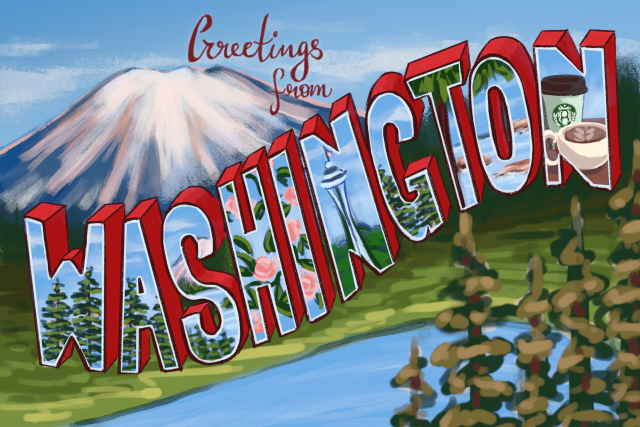[ad_1]
Two summers ago, I went to Washington both to visit my family and to be a tourist. I loved Mount Rainier — there was snow in the middle of July, but I could wear a tank top and shorts. The drive through the mountain pass was beautiful; there is nothing quite like it anywhere else in the world. The Chihuly Garden and Glass museum is filled with amazing glass-blown art with hundreds of different colors. I even attended Roe v. Wade protests in the heart of downtown with tens of thousands of other activists. Although Seattle, and Washington as a whole, have so much to offer, the most memorable part of the trip there was visiting Chinatown.
I am a fourth-generation Chinese American whose ancestors immigrated to the United States during the 1850s gold rush. They settled in Washington as merchants and set up a curio shop. They were among a few hundred other Chinese immigrants who set up shop together, forming what is now known as Seattle’s Chinatown. My ancestors bought a building in the heart of Chinatown on Weller Street and 7th Avenue. Through interviews with my grandpa, written excerpts from different relatives, and conversations with my parents, I had a specific idea of what Washington was like a 100 years ago. I imagined dirt streets, bustling carts and dirty buildings. My ancestors were merchants who would sell goods from home, so I pictured individual buyers coming in and out of the story as people were running around trying to establish an organized community. When my ancestors arrived, Washington was not yet a state, so immigrants from China and other Asian nations, pioneers from the East Coast and groups of indigenous people all mixed together.
Early Asian Americans created a safe haven for one another in both Chinatown and Japantown to share their experiences and struggles being an alien in this new land. However, there was tension between the two groups globally due to the Sino-Japanese war in the late 1800s. According to small excerpts that my family dug up from this time period, my ancestors and their friends carried that sentiment. Seattle’s Chinatown and Japantown were very ethnocentric with very few positive interactions according to oral interview records. However, it seems as though the children found their way to hang out outside of their communities. My uncle explained his two best friends came from Jewish and Japanese communities — they joined to form a club called “The Three Comrades.”
Learning about this gave me an idea of what life was like back when Seattle was in its early stages. My uncle was a “latchkey” kid — his dad was busy working hard in the shop and his mom was busy tending to his younger siblings and household chores. This allowed him free range to run around and explore the area. Chinatown, Japantown and the Jewish community were all right next to each other, so my uncle didn’t have to travel far. Due to the aforementioned clashes between ethnic groups at the time, you would think that these enclaves would be more protective of their children’s whereabouts, but not in this case. Kids are kids, and they will roam to their hearts’ desire.
I was in awe. Chinatown is filled with many traditional forms of architecture, small shops with Chinese merchandise and a lot of cheap, hole-in-the-wall Chinese restaurants. Chinatown is not a flashy, gentrified spot — it’s not the Capitol Hill district in DC with trendy book shops, cafes and boutiques or Seattle’s University District with its thrift stores, record stores and restaurants. A lot of Washington is modernizing, but Chinatown is a spot that seems a few decades behind. The streets are not particularly clean. Different avenues smell of fish. You can hear people yelling in Mandarin between some alleyways. As strange as it might sound, I love it.
Visit Seattle’s Chinatown to learn about the history of immigration to Washington and its impact on the formation of the different districts and neighborhoods there. As cool as the glass art museum was, I liked the Asian American and Pacific Islander-focused Wing Luke Museum and its honoring of Asian Americans, Native Hawaiians and Pacific Islanders a little more once I learned about their cultures, histories and art. The tenants of Chinatown, both present and past, created this area to be their own — an enclave protecting one another from those who tell them to “go back to where you came from.”
When people come to visit Washington for the hiking trails, the football games or the Space Needle, I would recommend visiting Chinatown because it shows a different side of Washington: “the immigrant story” side. Incorporating culture into your trip to Washington is a great way to appreciate the people creating that environment and give thanks for all they’ve done.
Daily Arts Contributor Natalie Mark can be reached at natmark@umich.edu
Related articles
[ad_2]
Source link











